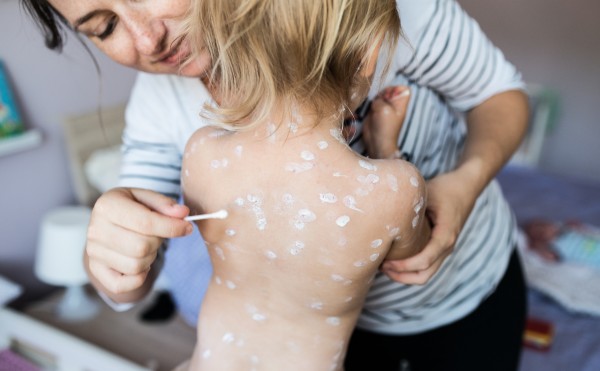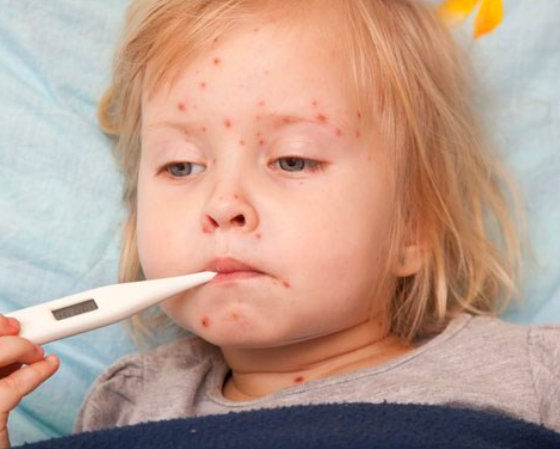Chickenpox, also called varicella, is very contagious rash that presents itself as small red bumps that turn into blisters that are filled with clear fluid. The base of the blister is usually pink and turns brown when it dries and crusts over. Blisters will spring up in waves causing some to be pink while others have already dried.
Chickenpox usually shows up on the face, scalp or trunk and then spreads to the rest of the body. A child with an average case of chicken pox will have between 250 to 500 blisters before it’s over with. Some children however, only get a few blisters.
Chickenpox usually poses no threat in a relatively healthy child and just has to run its course. You can soothe your child’s rash with over the counter ointments and cool baths containing baking soda or colloidal oatmeal. Additionally, a pain reliever can help with fever and discomfort. Antihistamines can also help, but it is recommended that you talk to your doctor before you give your child an antihistamine.
Although it’s difficult at best, try to keep your child from scratching or picking at the sores to prevent infection and scarring.
Today, children are given a chicken pox vaccine that is very effective. If your child has not had this vaccine, talk to your doctor about getting it.
When is Chicken Pox contagious?
Your child can spread the chicken pox virus a day or two before the rash even shows up. Most parents would not even think of chicken pox until they start to see the red spots and blisters. This is the reason that the virus passes so quickly though children.
Once you are certain your child has chicken pox, you should quarantine them until all the lesions are crusted over. At that point, they will not be able to spread the virus. Surprisingly, the chicken pox virus is spread through the air where it enters the lungs, then spreads through the blood and to then to the skin.
If your child comes down with the chicken pox, keep him home from creche or school until you are certain that he is no longer contagious. This usually takes between 10 to 20 days.
Helping them cope
Chickenpox will typically go away on its own after about a week or two, but there are few things you can do in the meantime to help your youngster feel better.
- Give them plenty of fluids.
- Make sure they get lots of rest.
- Pick up a lotion in the pharmacy to help ease the itch.
- Put a cool cloth on the rash to help with the itch.
- Give them a bath everyday to help them feel less itchy.
- An over-the-counter pain reliever to help to ease any fever.
- Keep nails short so they can’t scratch.
- Put gloves on them and if they really need to, get them to rub the itch rather than scratch it.








